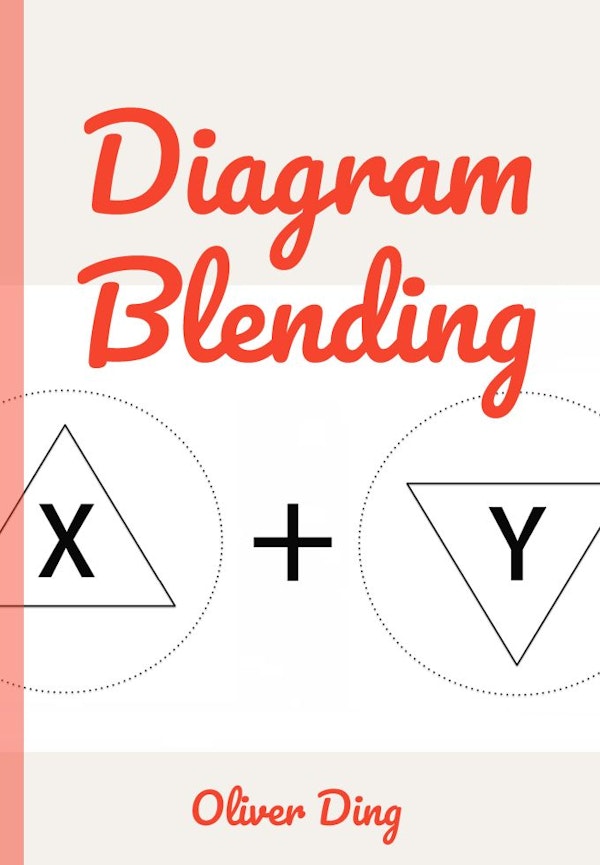In order to highlight a concept from many ideas, I always design a picture for the concept. From the perspective of Project-oriented Activity Theory, this action is the objectification of a concept.
There are three aspects of Objectification: symbolic, instrumental and practical. Symbolic objectification refers to giving a name to the new concept or symbolically represented in some other way.
A creative person tends to produce various ideas, so it's a challenge for him to manage these ideas. For me, I always pay attention to emergent ideas from each project. Once I identify a significant concept, I tend to design a picture in order to give the concept a visual identity.
The new concept of "Diagram Blending" emerges from the D as Diagramming project. On July 29, I wrote an article titled Tripartness and Diagram Blending. Today, I publish a new example about Diagram Blending.
Though the name of "Diagram Blending" is inspired by Conceptual Blending which is a cognitive linguistics theory, it is the continuing development of the idea of "meta-diagram" which was developed in 2018.
In 2018, I wrote a 108-page thesis which develops a theory about diagrams and diagramming. The thesis is named Diagram Explained. I should call the 2018 project the Diagram Explained project.
I recently started the D as Diaramming project.
From the perspective of Life-as-Activity framework, I am using the method of "Networks of Enterprise" to manage my creative enterprises. According to Howard E. Gruber, “We use the term enterprise to stand for a group of related projects and activities broadly enough defined so that (1) the enterprise may continue when the creative person finds one path blocked but another open toward the same goal and (2) when success is achieved the enterprise does not come to an end but generates new tasks and projects that continue it.” (1989, p.11)
You can find some examples of Diagram Blending from my recent articles:
There are three aspects of Objectification: symbolic, instrumental and practical. Symbolic objectification refers to giving a name to the new concept or symbolically represented in some other way.
A creative person tends to produce various ideas, so it's a challenge for him to manage these ideas. For me, I always pay attention to emergent ideas from each project. Once I identify a significant concept, I tend to design a picture in order to give the concept a visual identity.
The new concept of "Diagram Blending" emerges from the D as Diagramming project. On July 29, I wrote an article titled Tripartness and Diagram Blending. Today, I publish a new example about Diagram Blending.
Though the name of "Diagram Blending" is inspired by Conceptual Blending which is a cognitive linguistics theory, it is the continuing development of the idea of "meta-diagram" which was developed in 2018.
In 2018, I wrote a 108-page thesis which develops a theory about diagrams and diagramming. The thesis is named Diagram Explained. I should call the 2018 project the Diagram Explained project.
I recently started the D as Diaramming project.
From the perspective of Life-as-Activity framework, I am using the method of "Networks of Enterprise" to manage my creative enterprises. According to Howard E. Gruber, “We use the term enterprise to stand for a group of related projects and activities broadly enough defined so that (1) the enterprise may continue when the creative person finds one path blocked but another open toward the same goal and (2) when success is achieved the enterprise does not come to an end but generates new tasks and projects that continue it.” (1989, p.11)
You can find some examples of Diagram Blending from my recent articles:

